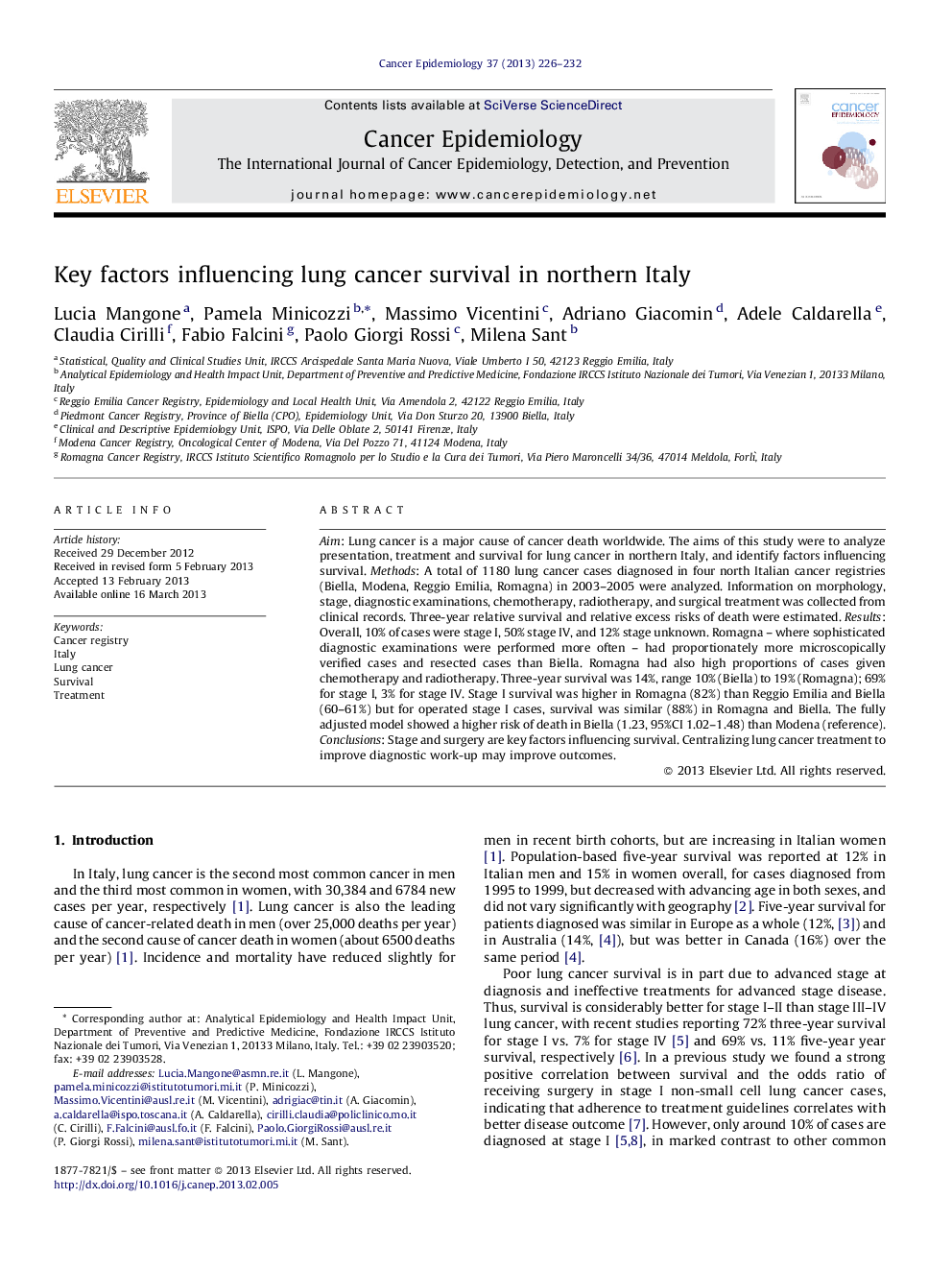| Article ID | Journal | Published Year | Pages | File Type |
|---|---|---|---|---|
| 2109536 | Cancer Epidemiology | 2013 | 7 Pages |
Aim: Lung cancer is a major cause of cancer death worldwide. The aims of this study were to analyze presentation, treatment and survival for lung cancer in northern Italy, and identify factors influencing survival. Methods: A total of 1180 lung cancer cases diagnosed in four north Italian cancer registries (Biella, Modena, Reggio Emilia, Romagna) in 2003–2005 were analyzed. Information on morphology, stage, diagnostic examinations, chemotherapy, radiotherapy, and surgical treatment was collected from clinical records. Three-year relative survival and relative excess risks of death were estimated. Results: Overall, 10% of cases were stage I, 50% stage IV, and 12% stage unknown. Romagna – where sophisticated diagnostic examinations were performed more often – had proportionately more microscopically verified cases and resected cases than Biella. Romagna had also high proportions of cases given chemotherapy and radiotherapy. Three-year survival was 14%, range 10% (Biella) to 19% (Romagna); 69% for stage I, 3% for stage IV. Stage I survival was higher in Romagna (82%) than Reggio Emilia and Biella (60–61%) but for operated stage I cases, survival was similar (88%) in Romagna and Biella. The fully adjusted model showed a higher risk of death in Biella (1.23, 95%CI 1.02–1.48) than Modena (reference). Conclusions: Stage and surgery are key factors influencing survival. Centralizing lung cancer treatment to improve diagnostic work-up may improve outcomes.
